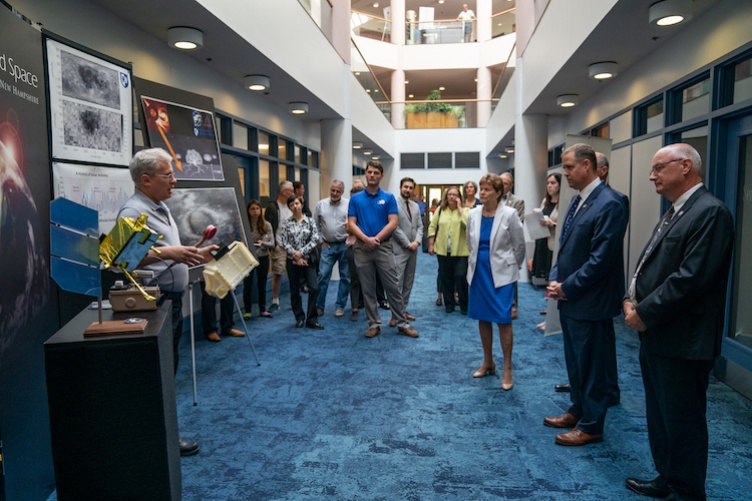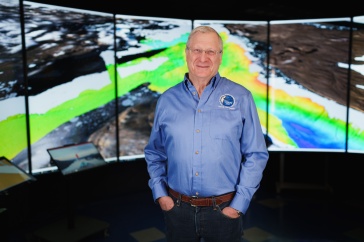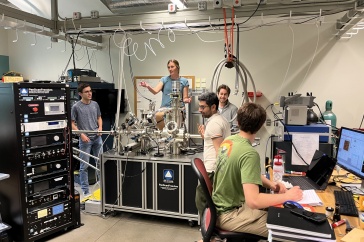

Less than a month after UNH received a $108 million NASA contract, NASA administrator Jim Bridenstine and U.S. Sen. Jeanne Shaheen visited campus for an up-close look at the university’s Space Science Center and the faculty members, researchers and students engaged in NASA partnerships.
“It was some of the brilliant minds and the great ideas that came from this institution that led to this award,” Bridenstine said of the recent contract to UNH for GLIMR, a space-based instrument that will study coastal ecosystems.

Bridenstine and Shaheen toured several key UNH-NASA partnerships, including GLIMR, led by research associate professor Joseph Salisbury. “GLIMR’s high-frequency oscillations will allow us to see variability in phytoplankton communities as they evolve over the course of the day,” Salisbury said.
“The work being done at UNH will help determine when NASA will send astronauts most safely to the moon and eventually to Mars.”
Other stops on the Morse Hall tour visited the moon, the sun and the edge of the solar system. Research scientists Jody Wilson, Andrew Jordan, Wouter de Wet and Fatemah Rahmanifard discussed UNH’s work on the Lunar Reconnaissance Orbiter; Professor Emeritus Eberhard Möbius and professor Nathan Schwadron described understanding the edge of our solar system with the IBEX and IMAP missions; professor Roy Torbert and students detailed the successful Multiscale Magnetosphere Mission that’s helping us understand solar events that spark auroras and could disrupt Earth-based power grids and communications; and research scientist Jonathan Niehof and students described their work with the Parker Solar Probe, NASA’s mission to “touch the sun.”
UNH has been involved in sounding rocket launches since 1964, associate professor Marc Lessard and students told Bridenstine. And Harlan Spence, director of the Institute for the Study of Earth, Oceans, and Space (EOS), shared his work on the Van Allen Probes.

Both visitors were engaged and curious, peppering the researchers with questions and connecting with the many undergraduate and graduate students who participated. Bridenstine asked undergraduate students working on the Parker Solar Probe to pose with him for a selfie, which he posted on Twitter.
“When it comes to heliophysics, the study of the sun, there is no place on Earth that has the quality of research and the engineering to do that,” Bridenstine said of UNH. “The work being done at UNH will help determine when NASA will send astronauts most safely to the moon and eventually to Mars.”
Following the tour, Shaheen and Bridenstine participated in a roundtable discussion with Granite State businesses that have contributed technology and supplies to NASA.
“The research and work done at UNH is critical to gaining valuable scientific knowledge and is boosting our economy while making New Hampshire a leader in this sector,” said Shaheen. “As the ranking member of the subcommittee responsible for funding NASA, I’ll keep fighting to ensure the agency has the resources it needs to invest in research and education and to meet our national goals, where New Hampshire continues to play an important role in advancing America’s leadership in space.”
“We love to step up to the plate and take leadership roles on these important missions,” said EOS director Spence, thanking Shaheen and Bridenstine for NASA’s long-term confidence in UNH. “The interdisciplinary research that’s in our DNA here in EOS is what helps us lead the way and remain innovative.”

-
Written By:
Beth Potier | UNH Marketing | beth.potier@unh.edu | 2-1566

















































